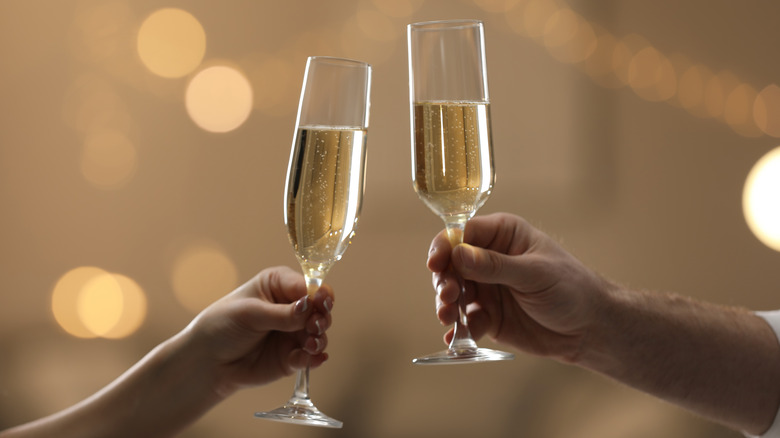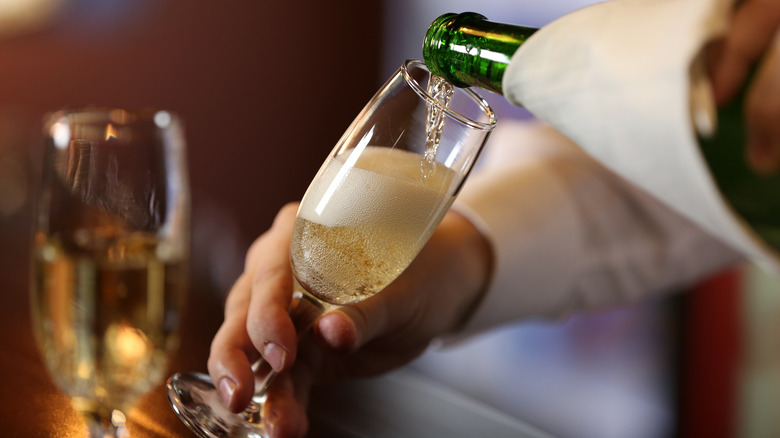You've Been Serving Champagne Wrong This Whole Time
Whether toasting an accomplishment or enjoying mimosas at brunch, chances are you've had a fair share of champagne. The bubbly beverage is made from a robust blend of different grapes, but what separates it from being labeled as sparkling wine is where it's made, which is the Champagne region of northern France (via Boston Magazine). Wes Narron, chief wine ambassador of City Wine Tours, shares that champagne made elsewhere may follow the rigorous process, "methode champenoise," developed by the French, but the beverage is still considered sparkling wine.
No matter the name it goes by, the bubbles are the biggest part of champagne's charm. According to Business Insider, physicist Gérard Liger-Belair found that one flute of champagne contains one million bubbles, a significantly less amount of bubbles than previously believed. The study, published in the Journal of Physical Chemistry, suggests that room temperature champagne holds its bubbles for a longer time than chilled champagne. This may come as a shock, as champagne is typically served from an ice bucket, however, Liger-Belair's research further states that champagne may hold a more exquisite taste at room temperature.
The pour is just as important as the temperature
Whether you're a champagne drinker or not, you've probably seen a champagne flute. The dainty stemware is unlike any other wine, beer, or cocktail glass, as it was specifically designed to extract notes of the highest quality of aroma, taste, and bubbles from the French sparkling wine (via The Spruce Eats). Compared to other glassware, flutes are tall and narrow, only holding up to six ounces of liquid, though a four-ounce pour is common due to the height of the fizz. Its tulip shape is unique to champagne because it helps to concentrate the bubbles. This leads back to the notion of more bubbles, better taste.
As seen with beer, champagne can be poured one of two ways: straight or tilted. However, if you were to ask physicist Gérard Liger-Belair, he'd say there's only one way to properly pour the fizzy drink, and that is tilted. "Several tens of thousands bubbles may be 'saved' if champagne is served in a tilted flute," Business Insider shares via The Telegraph. For a tilted pour, begin by holding the flute by its stem at a 45-degree angle. With your other hand, slowly pour the champagne so it cascades down the inner side of the flute. Timing is crucial because as the glass starts to fill, you'll need to bring the glass back to its upright position.

